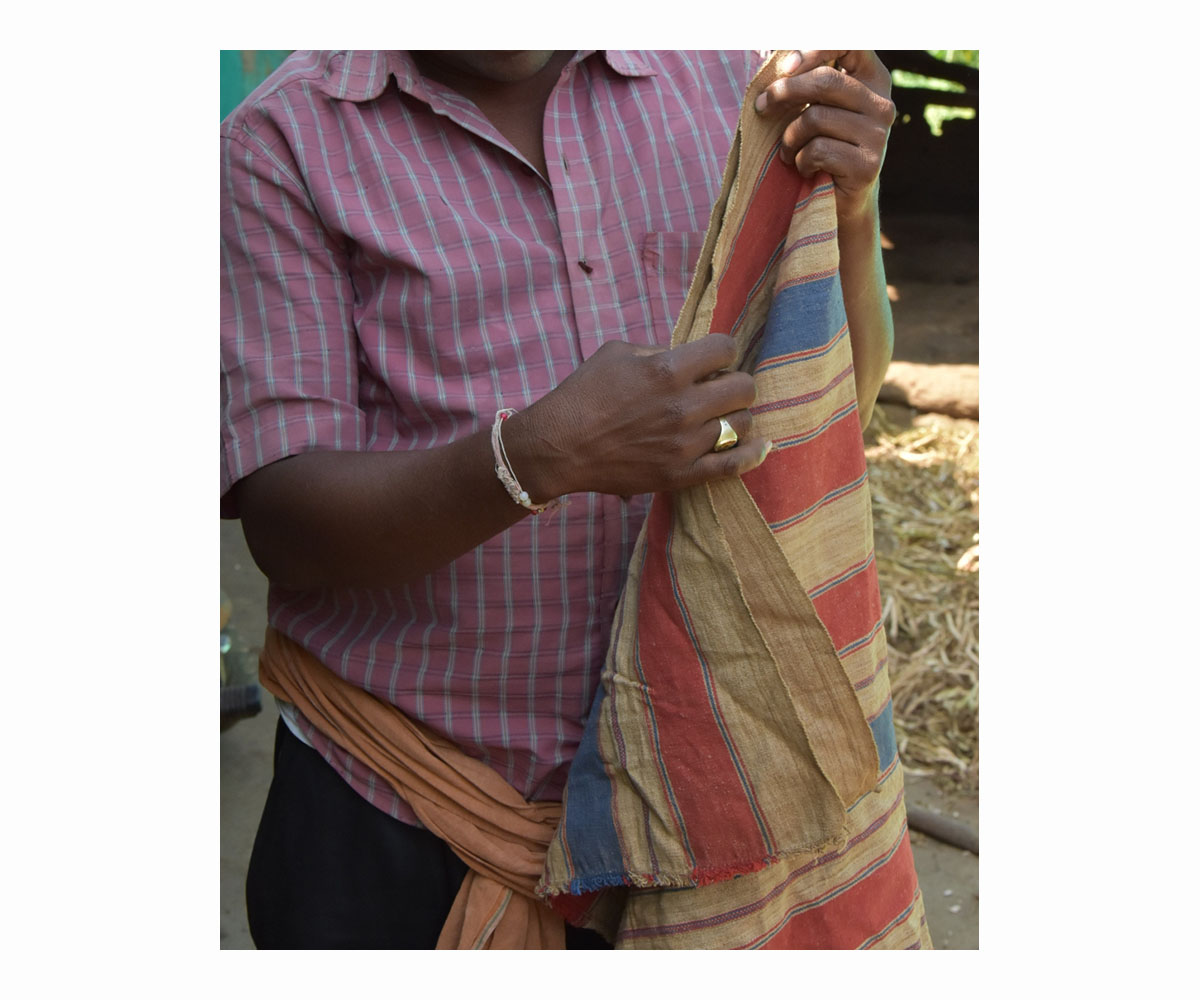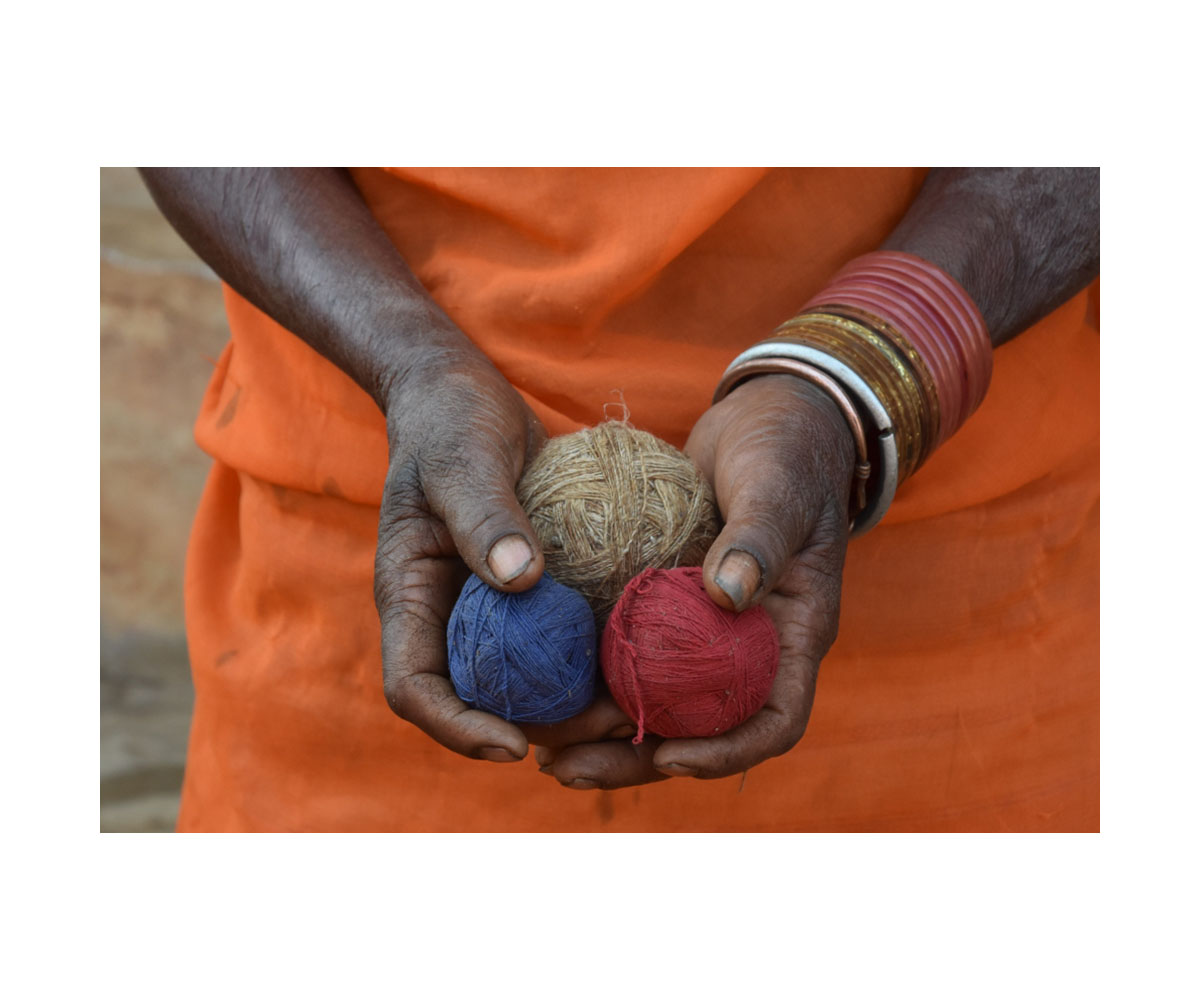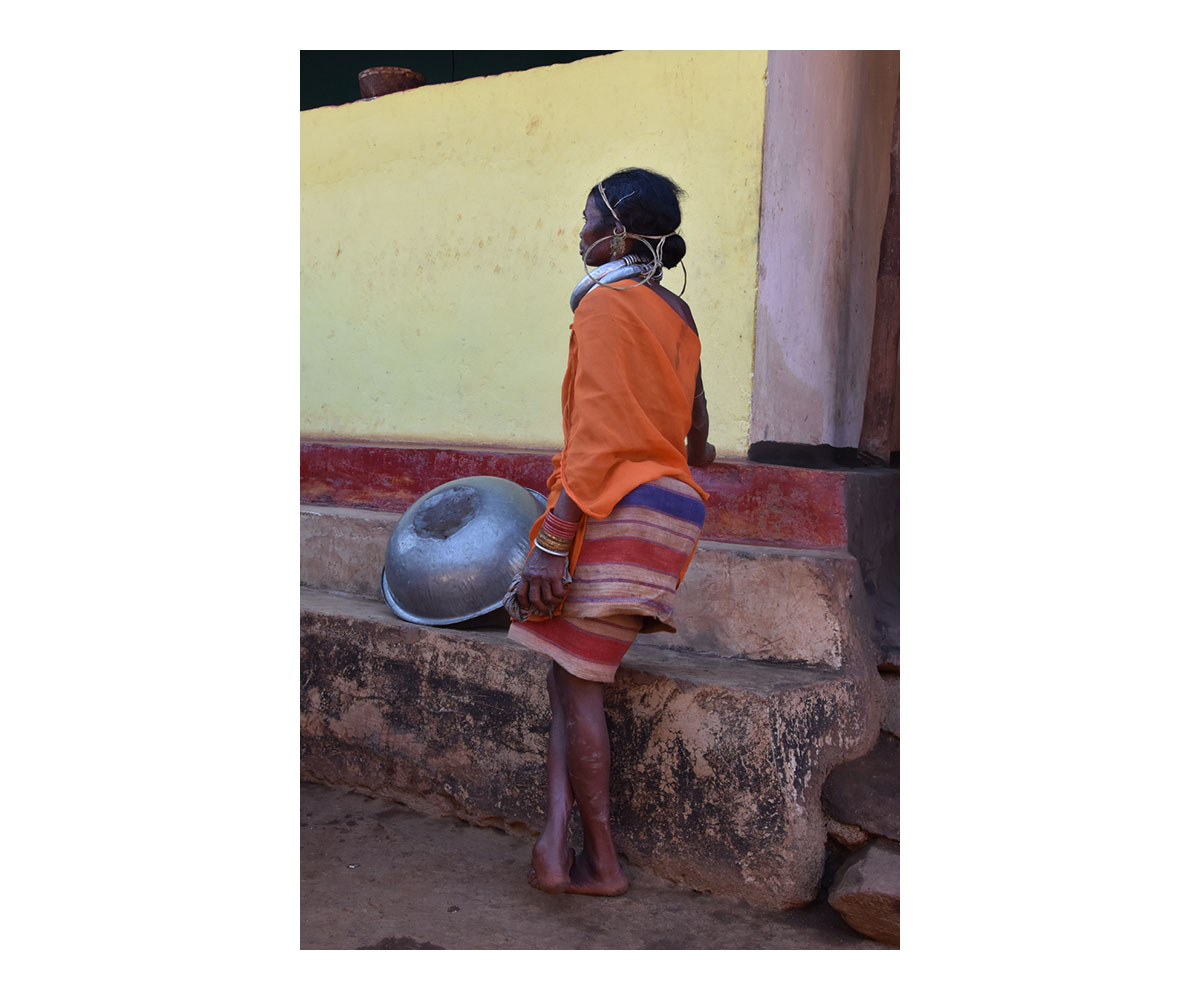ARTICLE
Bark Cloth
A plant-based fabric used by indigenous groups across Asia, Africa and Australia. In India, bark cloth was traditionally woven by Adivasi women of the Gadaba tribe in Odisha (formerly Orissa) and was locally known as kerang. The Bondo tribes of Odisha have also been known to have used similar clothes made out of bast fibres.
The thick and coarse cloth was made by cutting strips of bark from the young jati dor tree, soaking them in water and knotting the fibres together till they were ready to be spun. A backstrap loom was used to weave the fabric. The resulting garment, known as kisalo, bore a resemblance to the texture of tiger skin and was worn primarily by the women of the community. Kisalo consists of two pieces: the upper body garment that is worn by wrapping the cloth under the arm and tying it at the shoulder, and the lower body garment that is worn around the waist and held together by a rope. The cloth is typically dyed red, blue and white, usually in wide striped patterns.
Access to cheap commercial textiles has rendered bark cloth weaving unnecessary for the younger generation of the Gadaba community. Furthermore, the forest area from which Gadaba men traditionally extracted the plant fibre has shrunk, making it harder to obtain the good quality raw material. A few elderly weavers remain, but due to their age and a general lack of demand for kisalo, they no longer practise the weaving process.
Bibliography
Our website is currently undergoing maintenance and re-design, due to which we have had to take down some of our bibliographies. While these will be re-published shortly, you can request references for specific articles by writing to hellomapacademy@map-india.org.









